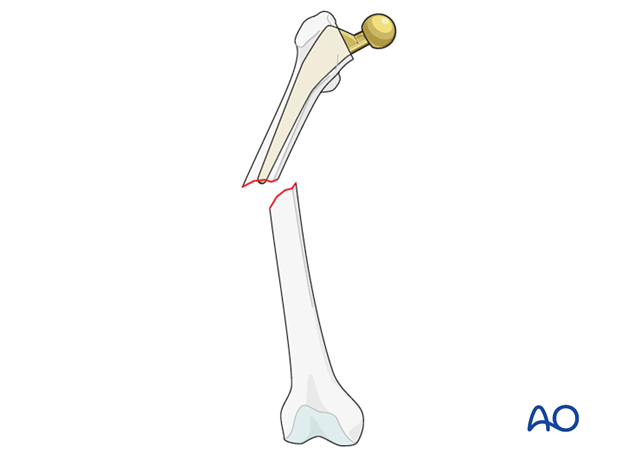Fracture around the stem with a stable implant and good bone stock
General considerations
Simple or comminuted fracture patterns at or around a stable stem are classified as type IV.3-B1 fractures by UCPF.

Etiology
Either high energy or more commonly low energy mechanisms.
Pathologic fracture must always be considered.
Clinical signs
- Deformity of the lower limb
- Ecchymosis
- Leg length discrepancy
- Pain
Imaging
AP and lateral radiographs usually reveal the complexity of the fracture. When the fracture extends more proximally, a CT scan can be helpful to delineate lines that extend between the trochanters. Most important is a review of any prior radiographs of the hip replacement which can allow for evaluation of stability. If any changes are noted between the prior set of radiographs and the injury films, the stem should be considered unstable and revision is a possible treatment.
Look for asymmetric liner wear and associated osteolysis.













